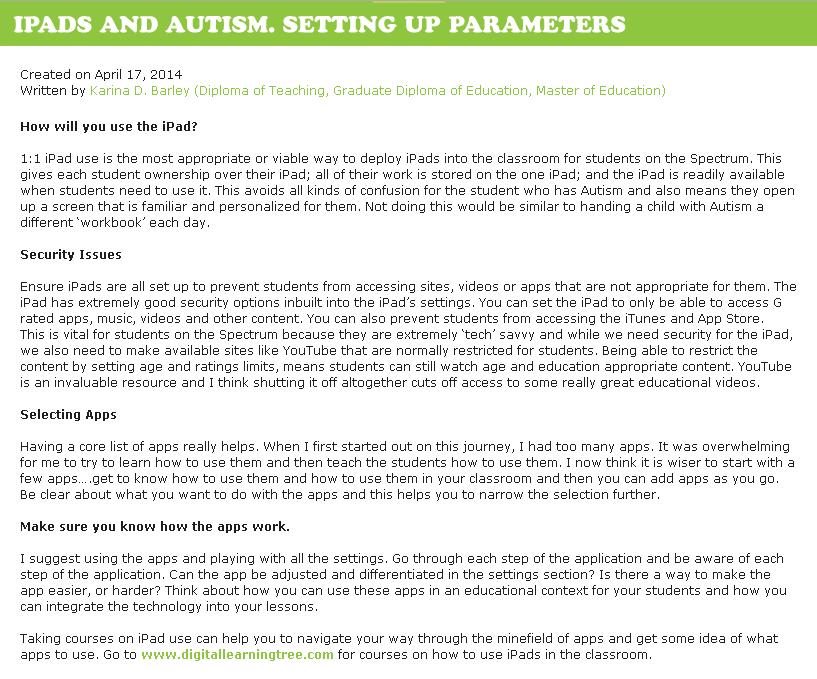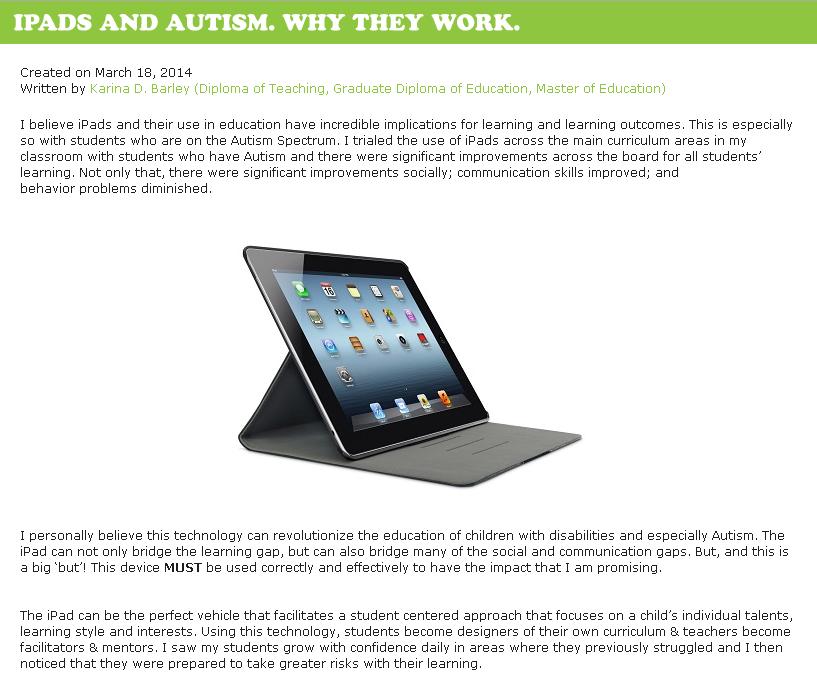iPads and Autism – Setting Up The Parameters
Setting up the parameters for using technology is something every parent should do, but it is especially important when you are using an iPad for autism education.
This blog gives you a brief introduction to how that is done, including:
This blog gives you a brief introduction to how that is done, including:
- How will you use the iPad?
- Security issues
- Selecting apps
- Make sure you know how the apps work
- Allocate the iPad for educational use only
- The device cannot do the work for you, or replace you as a teacher
- Implementing guidelines

To read the whole blog, please visit iPads and Autism. Setting Up Parameters
– Karina



